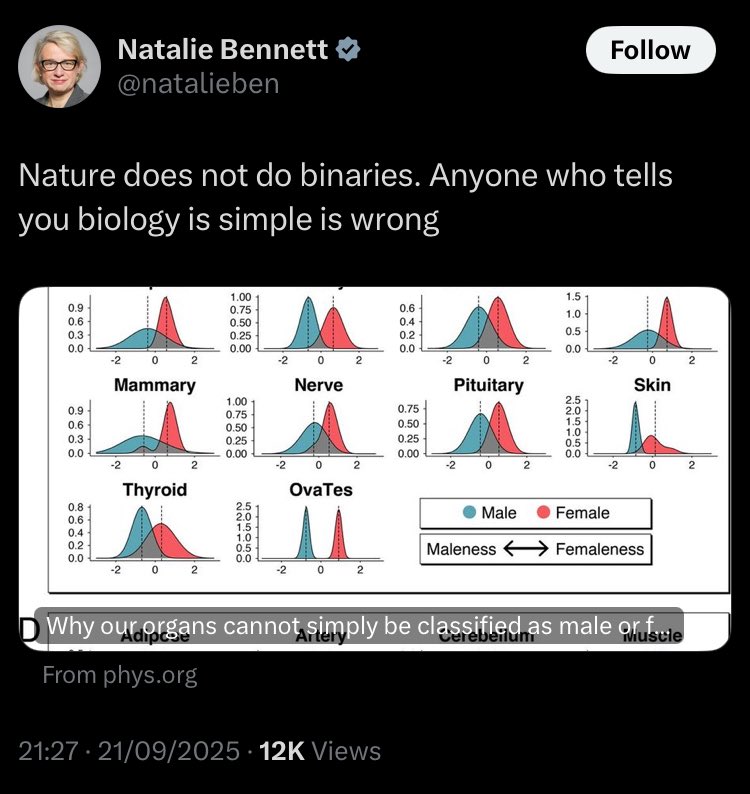Lots of clever people noticing the basic flaw with the current argument being presented to @WorldRugby.
If even ‘starved’ untrained transwomen retain 20-40% muscle/strength than matched females, how can one argue that trained transwomen will reach parity?
If even ‘starved’ untrained transwomen retain 20-40% muscle/strength than matched females, how can one argue that trained transwomen will reach parity?
https://twitter.com/timoconnorbl/status/1301550238180704257
The premise of ‘nobody has studied changes in athletes’ implies that athletes:
1. will respond differently to the general population to T suppression.
2. will somehow become more similar to females than the untrained population, who retain a 20-40% over matched females.
1. will respond differently to the general population to T suppression.
2. will somehow become more similar to females than the untrained population, who retain a 20-40% over matched females.
The proposed biological mechanisms etc to support these implications are never clarified.
1. There is very solid rationale to believe that transwomen athletes will respond differently to the general population to T suppression.
1. There is very solid rationale to believe that transwomen athletes will respond differently to the general population to T suppression.
That is: pre-trained transwomen are unlikely to follow the ‘starved model’ baseline, and newly-training transwomen are likely to mitigate muscle/strength loss, perhaps even gain.
Which deals with implication 2.
I want to hear biological arguments for the hypothesis that athletic transwomen will become more on par with females than will gym-shy, aggressively atrophying transwomen.
Does anyone have any? Seen any?
I want to hear biological arguments for the hypothesis that athletic transwomen will become more on par with females than will gym-shy, aggressively atrophying transwomen.
Does anyone have any? Seen any?
• • •
Missing some Tweet in this thread? You can try to
force a refresh







